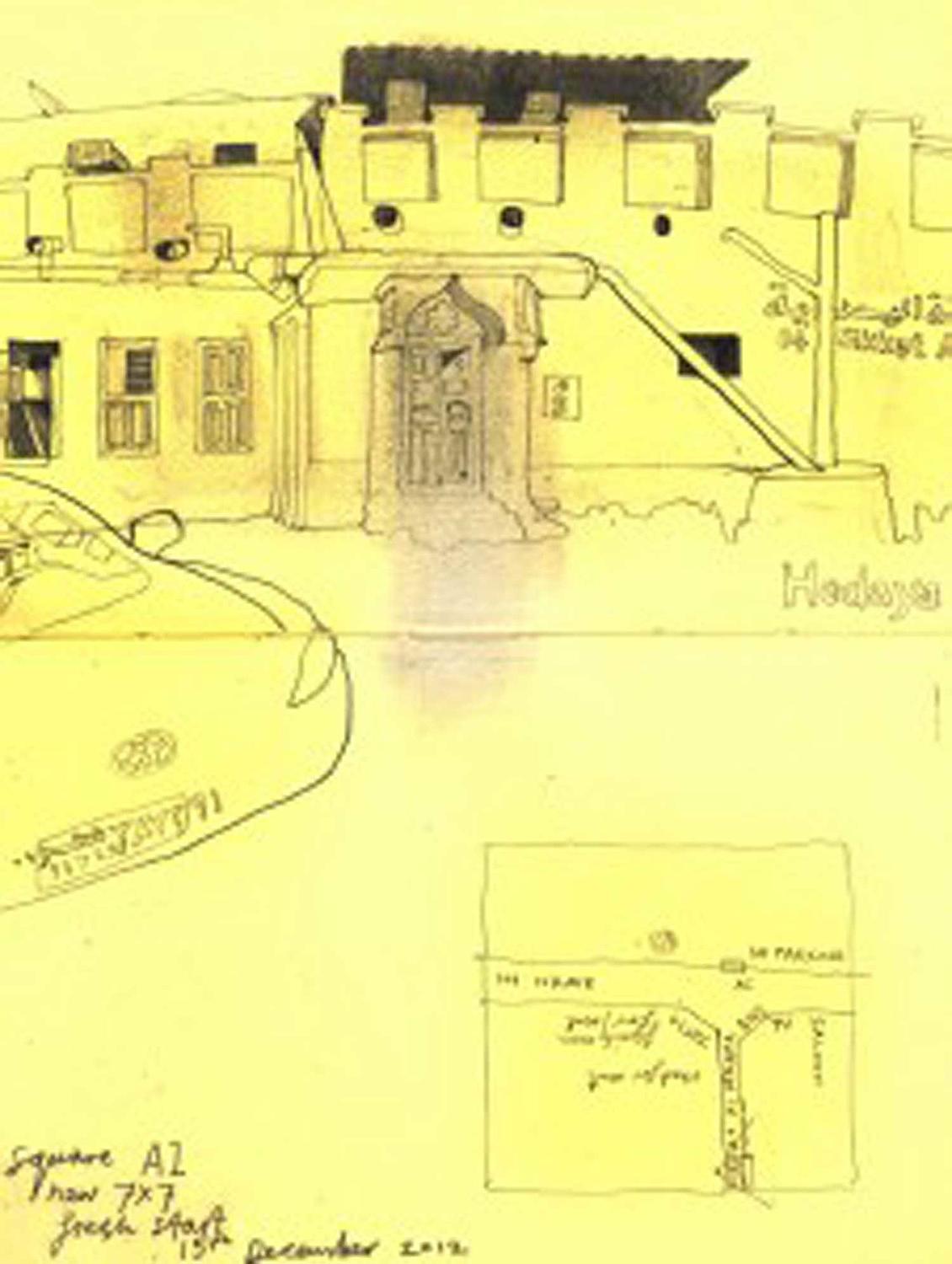Sikkat Al Hedaya, Doha
There is a chill in the air and a gusty breeze. It feels grey, even though there are no clouds in the sky.
I have decided to do my own stitching; to make my own patchwork quilt; seven along and seven down, from A1 to G7. Seven is a nice number. The quilt will keep me warm and I will pass it on to my children when it gets tattered. They can see to its repair when I am old.
Stitching the city is the topic of the moment in Al Asmakh – the neighbourhood of the deaf sheikh
– but so often it seems that things do not come together, as fast or as connectedly as one would hope. So here I am.
My first patchwork square begins just off Al Asmakh, the voluminously curved street which takes its shape from a millennia-old wadi, flowing down to Doha Bay.
It is a street with no name (I will find its name) and there is a saloon, a shop full of dusty TV’s, two no parking signs and some bins. If I carried on straight it would take me on a magical journey, looking into the future, wandering through one of loveliest, most characterful pieces of city I know, one small block south of the busy Msheireb St; amongst quietness and echoing morning sounds, not cars. But instead I turn South on Sikkat al Hedaya (I will find out what Hedaya means).
I gravitate naturally to the large house on this small street, number five. I start to draw. Its ogee arch with a simple rosette is nice, and I think it would be even nicer if it was repaired and cleaned up, provided it didn’t lose its patina.
Its door is not one of the special old ones; for all I know it may have been knocked together in the 70’s or ‘80’s when the original one fell off its hinges. But as I look carefully amongst the mediocre woodwork of its almost-symmetry I realize that even this unremarkable door contains a door-within-a-door on the right hand side. This is the small door (I will find out its name in Arabic) which people say was used as the everyday entry, to make visitors look down as they came in, giving time for the women of the house to hide themselves in the private parts of the house.
The house is a classic; its only windows are to the majlis on the left – five in a row. It is a grand house (I will find out who lived there). The fact that it has been rendered at some point in ‘pebble dash’ texture could be remedied. What drew my eye to begin with was its projecting cornice of corrugated metal, an accidental celebration of entry, giving grandeur to the central portion of this pleasantly asymmetric house. The pipes on the outside are also appealing, even though if renovated, I have to admit they would probably be replaced by something invisible.
As ever when I stop, stand and draw, I start to listen. The bin lorry is gently grinding on no name street. Gutteral ablution sounds from within are intermittent. A blue plastic bag has wafted past me to the left and is now returning to the right, making a whispering sound as it goes. Two perfect pigeons walk by; a married couple in this neighbourhood of ‘batchelors’. They are smaller than English pigeons and are tinted, it seems to me, with the pink of Qatari stone. I hear them cooing softly even though they go by in silence. Suddenly a sharp click. The door opens but no person appears; nothing. I try to carry on regardless but I find this strange; how did the door open ? I am too shy to investigate and keep my head down, shading in the darkness of the cornice above the door with my HB lead. After many minutes, when I am not looking, a blue shirt and a bright smile appears from inside, nods and goes off to work.
As I pack up to leave – only then – do I see that inside the car beside me, masked by reflections on the glass, is a man, motionless and still. Is he asleep, is he reading ? There are fractional movements from time to time, but I cannot tell. I felt solitary, all these minutes from 6.59 to 7.48, but someone was there all along, just beside me.
As I leave I think to myself, of course the city is full of things we do not notice, but it is good to notice them from time to time.
